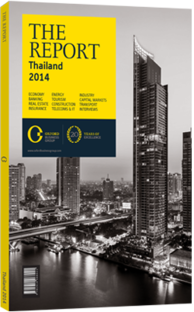The going rates: Taxes as applied to individuals and businesses in the country
There are two categories of income tax in Thailand, personal and legal entity. Personal income tax is a direct tax that every person with an income is required to pay, and also any person who died in that fiscal year, undivided estates, and ordinary partnerships or groups of people that are not a legal entity. Personal income tax is based on assessable income, which is not limited to money but includes any asset or benefit that could be calculated as money. Moreover, tax that other people pay instead of the actual taxpayer for any income, tax credit or share of profits are also counted as assessable income.
Income Tax Rates
Thailand’s tax rates are progressive. For 2014 the Revenue Department has announced the personal income tax rates as follows. Anyone with assessable income from BT0-150,000 ($0-4905) has no duty to pay personal income tax. For people with assessable income from BT150,001-300,000 ($4905-9810) the tax rate is 5%, BT300,001-500,000 ($9810-16,350) is 10%, BT500,001-750,000 ($16,350-24,525) is 15%, BT750,001-1m ($24,525-32,700) is 25%, BT1,000, 001-2m ($32,700-65,400) is 30%, and for assessable income of over BT4m ($130,800) the rate is 35%. In the case of personal tax avoidance or incomplete payment, the Revenue Department officer may have a warrant and ask for a fine for the tax avoiding or incomplete taxpayer. There are criminal penalties too. The taxpayer has a right to appeal the officer’s decision within 30 days of receiving the notice. Income tax for legal entities is also a direct tax assessed for companies or partnerships established under Thai law, or foreign law in some cases. Normally the company or partnership is required to pay tax twice per year according to the accounting period. In some cases companies or partnerships established under foreign law may have a tax exemption, according to a double taxation agreement. Taxable income for the company or partnership is assessed on the income of the accounting period and the tax is payable within two months. The tax rate is 30% of half of the estimated assessable income. The 30% of the assessable income may be reduced if the company or partnership has paid-up capital on the last day of the accounting period of less than BT5m ($163,500). In this case, net profit of up to BT150,000 ($4905) will be taxed at 0%; BT150,000-1m ($4905-32,700) at 15%; and above BT1m ($32,700) at 20%, for accounting periods beginning on or after January 1, 2013.
As Thailand’s tax rate is progressive, people or companies with a high income pay a high rate of tax. Tax planning helps people and businesses pay complete tax and less tax, and it is legal.
Value-Added Tax (VAT)
VAT is a trading tax, and in Thailand the VAT rate is 7%. This tax is based on the value of the goods and services and also the value added at each step of the production and sale of the said goods and services. The person who is responsible for the VAT is the producer, provider, wholesaler, retailer, importer or exporter.
Generally, every person or legal entity that is a producer, provider, seller, importer or exporter has a responsibility to pay tax unless the law specifies otherwise. VAT is an indirect tax, so the person who is responsible to pay VAT is the consumer. The VAT tax base is assessed on the net value that the entrepreneur receives or will receive from the sale of goods or services. VAT tax is calculated on income before expenses, and the income can be an asset, payment, service fee or any benefit and may be calculate in money. The entrepreneur has a duty to register for VAT and must submit the VAT monthly, whether the entrepreneur has made sales or provided services that month or not. Moreover, the entrepreneur has a duty to issue the tax invoice to the seller or the service receiver. The officer has a right to assess the correct VAT or fine the entrepreneur. Importers and exporters have to pay Customs tax, which is indirect, at a rate specified by the Customs Department.
You have reached the limit of premium articles you can view for free.
Choose from the options below to purchase print or digital editions of our Reports. You can also purchase a website subscription giving you unlimited access to all of our Reports online for 12 months.
If you have already purchased this Report or have a website subscription, please login to continue.

